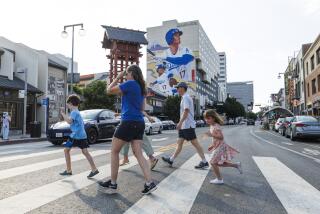‘Enemies Within’ sheds light on NYPD’s secret spying campaign
What with taking off our shoes and belts at airports, discovering the feds are hoovering up all our phone records, and watching drone strikes and SEAL raids around the globe, it’s sometimes easy to forget that America has escaped the horror of another mass casualty terrorist attack in the dozen years since Sept. 11, 2001.
Other than blind luck, it’s an open question whether that success is because of aggressive law enforcement at home, muscular intelligence ops overseas, or the inescapable fact that most terrorists, like most criminals, are fairly dimwitted and thus get caught.
Indeed, the vast majority of people now imprisoned on terrorism charges are young, wannabe Bin Ladens who were handed phony bombs by government informants and then arrested in carefully controlled sting operations.
The plots that could have been the most deadly, including the “underwear” bomb aboard a jet to Detroit in December 2009, and the massive car bomb left in New York’s Times Square in May 2010, were foiled because the devices fizzled, not because the FBI or CIA detected or disrupted the plans.
That makes a deep dive into the strange case of Najibullah Zazi all the more useful. Zazi, of course, was the former New York coffee-and-Danish street cart owner who flew to Pakistan with two friends, got themselves into an Al Qaeda training camp for suicide bombers, and came home determined to blow up three New York subway trains in 2009.
His case was instructive not just because he and his confederates were caught — thanks to a combination of blind luck, smart police work and bumbling terrorists — but because it helped expose a bizarre piece of America’s post-9/11 terror-scape: the New York Police Department as rogue spy service.
Matt Apuzzo and Adam Goldman, two investigative reporters for the Associated Press, shared the 2012 Pulitzer Prize for exposing the NYPD’s clandestine spying campaign on American Muslims. In “Enemies Within,” they have expanded that seminal work and woven it with a police procedural on the Zazi case. It’s an uneven mashup, but it’s worth the effort.
The Zazi chapters read like a taut thriller, full of car chases, secret surveillance and cop screw-ups. It pits a series of hard-headed, foul-mouthed G-men and other state and federal counterintelligence types against three mooks from Queens who managed to do what the CIA evidently has not: get in to meet some of Al Qaeda’s top operatives in Pakistan.
Luckily when he gets home, Zazi sends an email to an Al Qaeda drop box about his wedding plans. U.S. intelligence grabs the email, and the feds soon decide he wants to blow up New York. A cross-country chase and much mayhem ensues. But when Zazi spots his surveillance and flushes his bomb-making chemicals down the toilet, the FBI can’t prove much of anything. Then Zazi decides he’s smarter than they are and offers to come in to talk. He ultimately confesses.
Perhaps that’s the real surprise. Despite the perception that suspects clam up under police questioning, most talk even after they are told they have the right to remain silent. Terrorists, it turns out, are even more likely to sing. Once his plot was foiled, confessing was Zazi’s chance at glory.
The narrative slows when the authors shift to the NYPD intelligence unit. The authors make a convincing case that like Zazi, New York’s finest became self-radicalized after 9/11. They “saw terrorists everywhere. The middle class and the unemployed. The aimless and the ambitious. Criminals and college students. Longtime American citizens and new arrivals. Anyone.”
The result was the Demographics Unit. Led by a former CIA officer, it sent plainclothes cops dubbed “rakers” into coffee shops, bookstores and halal butchers. They recruited informants, tracked who watched Al Jazeera, recorded lectures and sermons, infiltrated college Muslim study groups. Mosques were treated as terrorist fronts.
It was all of dubious utility and legality given the focus on protected political speech and religious beliefs rather than unlawful activity. Even the cops knew it. They had a running joke: “This is Intel. We don’t make cases. We make overtime.”
It’s hard to argue that authorities shouldn’t try to identify terrorists before they act rather than just after. That leaves the authors in a quandary. They are understandably outraged that the NYPD was “secretly assessing the religious and political views of US citizens ... and viewed activities protected by the First Amendment as precursors to terrorism.”
But they are equally outraged that the NYPD intelligence division — which now has an annual budget of $60 million and 600 officers — wasn’t very good. It failed to identify Zazi, the Times Square bomber, or other New Yorkers who contacted Al Qaeda and were bent on murderous schemes.
“Was any of it illegal? We don’t know,” they admit. Nor do we, but “Enemies Within” is asking the right questions.
Drogin, Washington deputy bureau chief of the Los Angeles Times, is author of “Curveball: Spies, Lies and the Con Man Who Caused a War.”
Enemies Within
Inside the NYPD’s Secret Spying Unit and Bin Laden’s Final Plot Against America
Matt Apuzzo and Adam Goldman
Touchstone: 321 pp., $27.99
More to Read
Sign up for our Book Club newsletter
Get the latest news, events and more from the Los Angeles Times Book Club, and help us get L.A. reading and talking.
You may occasionally receive promotional content from the Los Angeles Times.









